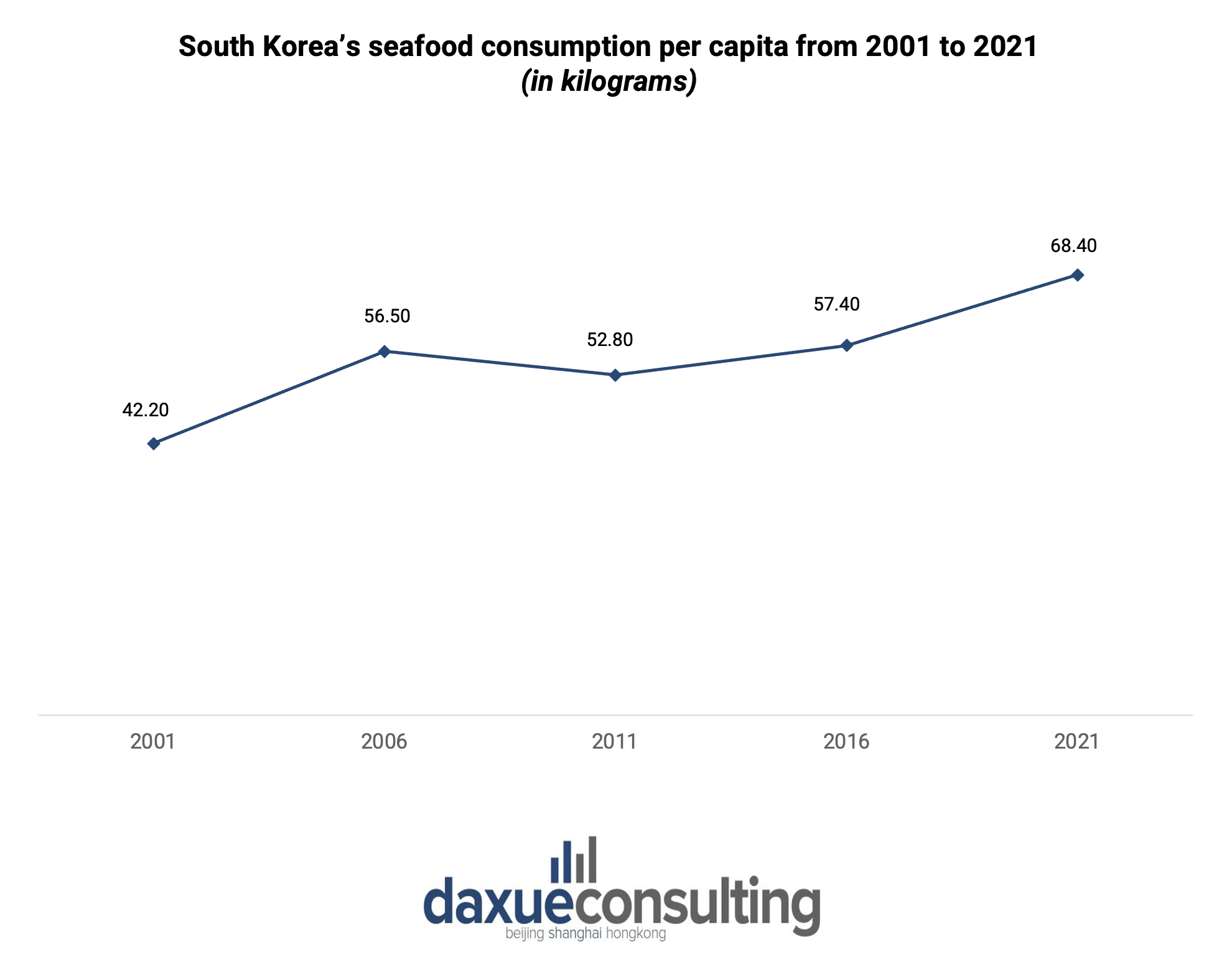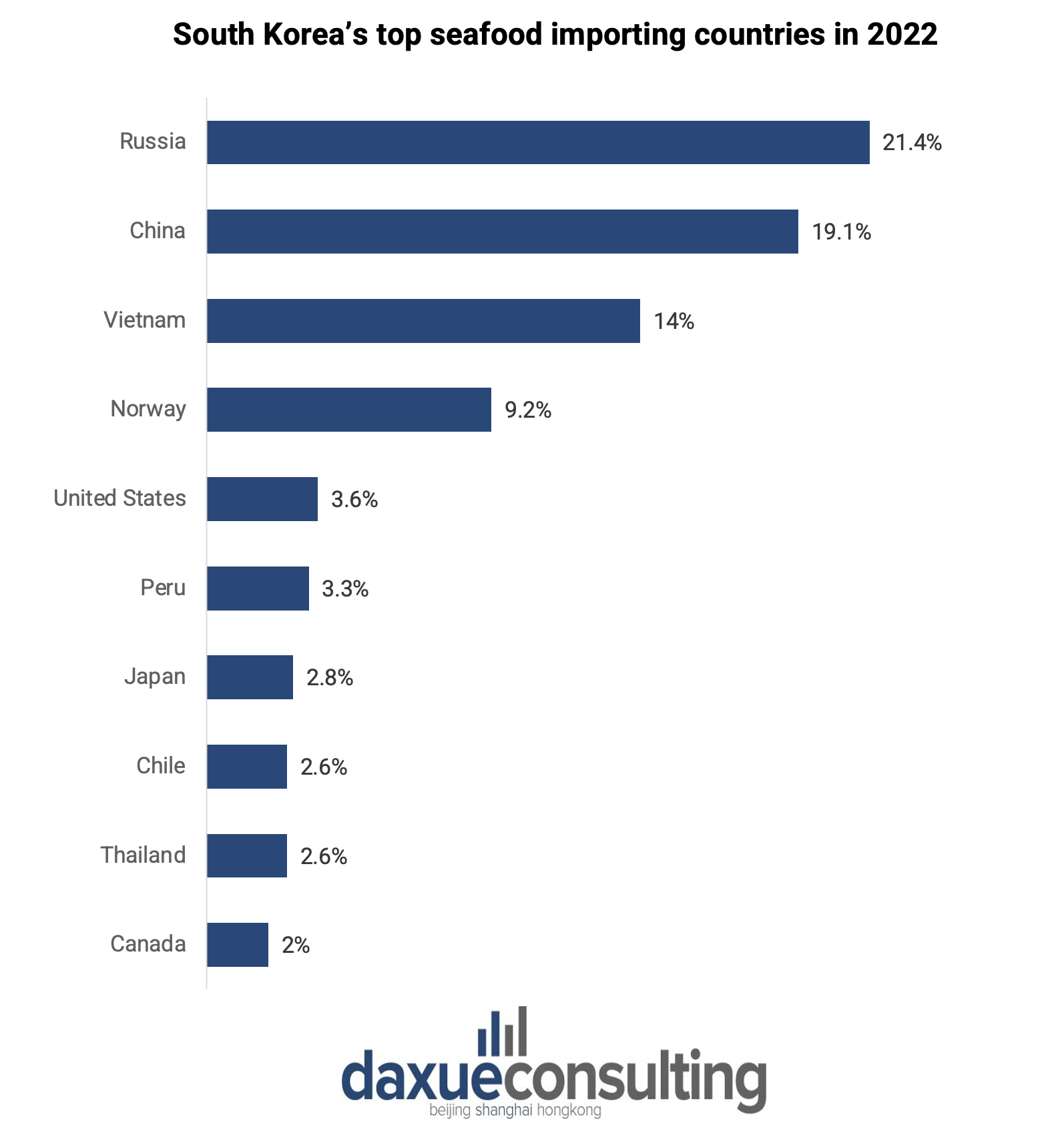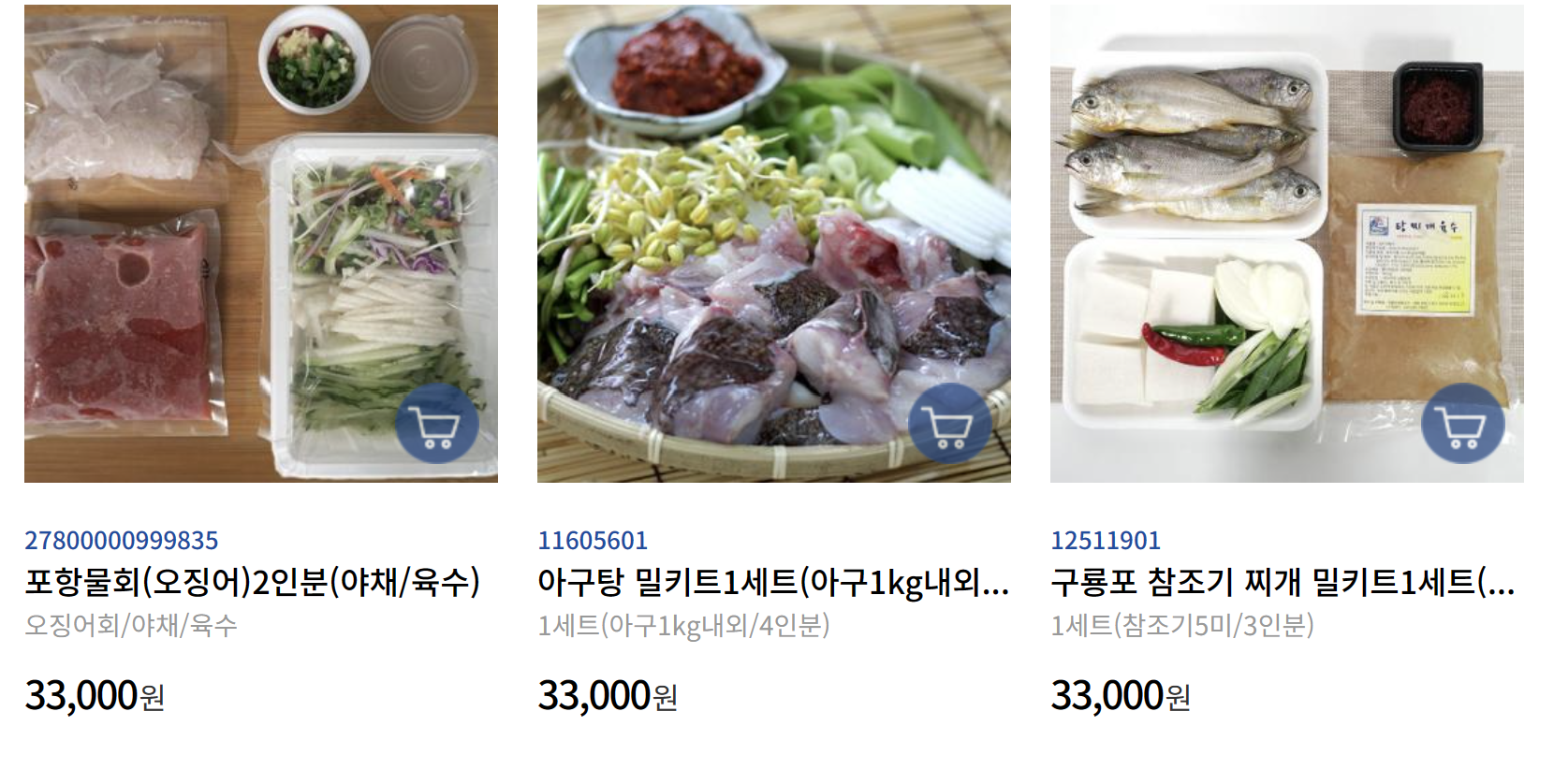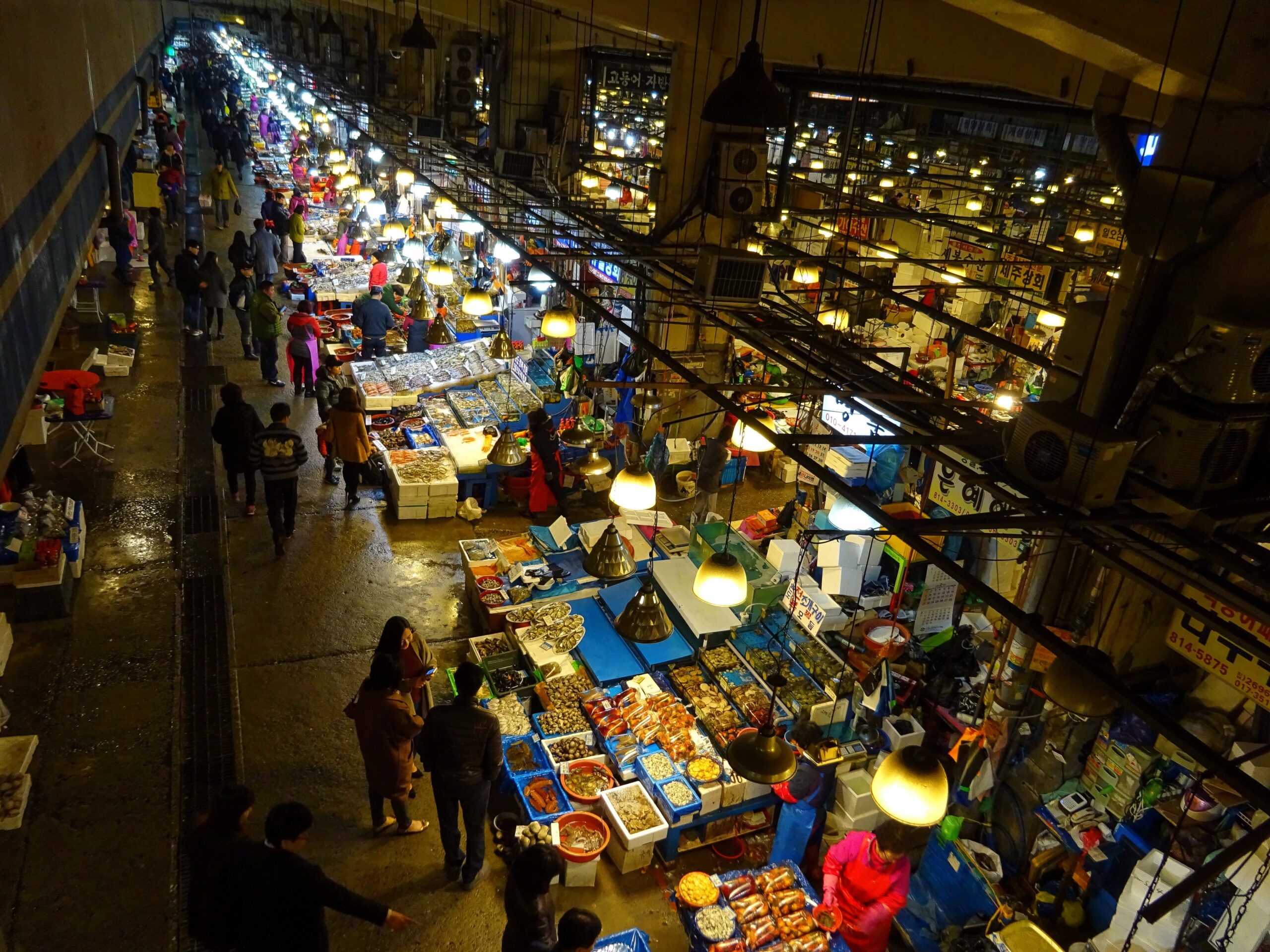South Korea ranks among the world’s largest seafood consumers, with seafood consumption per capita of 68.4 kilograms per person in 2020. In 2023, the revenue for South Korea’s seafood market is estimated to be USD 13.98 billion, with an expected annual growth of 4.2%. However, Japan’s controversial release of Fukushima radioactive water brought split opinions among South Korean citizens. 75% of respondents expressed concerns according to a survey conducted by Gallup Korea. This concern persists despite the government’s effort in trying to keep the market active.

Download the ASEAN x China business relations report

From ocean to plate: South Korea’s healthy, affordable seafood
According to Korea Rural Economic Institute, seafood stands at the top of South Korea’s food consumption per capita in 2020, slightly higher than rice and meat. Seafood consumption per capita increased from 52.8 kilograms in 2001 to 68.4 kilograms in 2020. The main reasons for the increase include South Korea’s rising GDP per capita and growing societal focus on health.
Among the most preferred seafood in 2022 were squid, mackerel, and seaweed, according to a survey done by Korea Maritime Institute. They are not only popular for their tastes and health benefits, but also for their reasonable price, making them common dining ingredients.
South Korea’s seafood import and export on the rise
South Korea exported USD 3.15 billion worth of seafood in 2022, marking an 11.5% increase from 2021. Exports to primary seafood trade partners, including China, Vietnam, Thailand, Japan, and the United States, have all increased. Moreover, with the influence of Hallyu, South Korean seaweed further spread overseas and the country exported USD 650 million worth of seaweed in 2022. By 2027, South Korea has ambitious plans to expand its seafood exports to USD 4.5 billion.
Simultaneously, South Korea has increased its seafood import by 12.6% from USD 6.18 billion in 2021 to USD 6.96 billion in 2022. South Korea’s primary seafood imports come from Russia, followed by China, Vietnam, and Norway. Compared to 2021, South Korea’s seafood import in 2022 from Russia, China, and Vietnam increased, while seafood import from Thailand and Taiwan decreased.

Data source: Yonhap News, designed by Daxue Consulting Top 10 seafood importing countries for South Korea in 2022
Digital dining: How e-commerce drives fuels South Korea’s seafood craze
The rise of e-commerce in South Korea also drives South Korea’s seafood consumption. Platforms like Fishsale and Shinsunhae enable consumers to receive fresh seafood within a few days. These platforms not only sell fresh seafood but also meal kits and seasonal seafood, such as abalone, shrimp, and mackerel, which are known for their best taste during the autumn and winter.

Source: Freshsale website, Seafood meal kits on a South Korean online platform
According to a report published by South Korea’s Ministry of Oceans and Fisheries, online revenue grew massively after Covid-19. The government’s social distancing policies prompted Korean consumers to turn their attention to e-commerce. As a result, nearly USD 60 billion of agricultural products and seafood were traded online in 2022, increasing by 10% from 2021.
Fukushima waste water release: Environmental concerns and consumer impact
South Korea has banned seafood imports from Fukushima and seven other surrounding prefectures since 2013. However, as Japan released potentially radioactive water into the Pacific Ocean, South Korean citizens are worried about the waste water polluting sea surrounding their country and affecting domestic seafood. Some seafood restaurants, including those known for their Omakase experiences popular among the MZ Generations, claim that visits to seafood restaurants have decreased dramatically after the approval of Japan’s plan to release Fukushima waste water into the ocean.
According to survey done by Consumers Korea, more than 90% of South Korean respondents said that they will reduce seafood consumption after the release. In addition, 74% of the South Korean citizens believe that Fukushima nuclear waste water is harmful to both the environment and human body. In an effort to ensure that domestic seafood is safe, President Yoon publicly visited and ate seafood in a Korean seafood market.
Despite concerns, South Korea’s seafood consumption increased after the nuclear waste water release. It is likely because consumers aim to have seafood before the waste water spreads in the ocean. The Vice Minister of South Korea’s Oceans and Fisheries claims that seafood sales in domestic Korean markets increased by 68.1% from August 24th to 25th. In addition, seafood gift set pre-order sales has increased by 49% compared to 2022. However, people working in the related fields believe that this is because the gift sets were prepared before Japan released the nuclear waste water.
South Korea’s seafood market: Adapting beyond Fukushima
In 2022, Japan accounted for 2.8% of South Korea’s imported seafood. However, with growing consumer concerns, Japanese seafood consumption in South Korea is likely to decrease. While the Chinese government banned imports from Japan in the seafood market in China, some Korean citizens are protesting, pushing the Korean government to take action on Fukushima nuclear waste water release. In addition, the decrease in demand for Japanese seafood would likely increase South Korean consumers’ demand for domestic seafood and seafood from places that are less affected by the nuclear waste water release like Norway.
Despite these changes, it appears highly improbable that South Korea’s seafood consumption would experience significant decline in the long term. South Korea’s extensive coastline and deeply ingrained cultural preferences for seafood have historically provided abundant and easily accessible seafood for Korean people. Furthermore, seafood has had been an integral part of Korean cuisine for centuries. Seaweed and canned tuna are also popular gifts people give during national holidays like Chuseok, Korean Thanksgiving Day.
Moreover, the South Korean government is planning to invest extra USD 60.36 million to boost South Korea’s seafood consumption. This could potentially open opportunities for other foreign countries to increase their seafood export to South Korea.
A deep dive into South Korea’s seafood market
- The seafood market in South Korea is one of the world’s largest. It has been experiencing growth in recent years, largely due to an increase in consumer’s income and interest in health.
- South Korea saw a significant increase in seafood exports in 2022, reaching USD 3.15 billion, driven by trade partners like China and Vietnam. It also relies heavily on seafood imports to meet its domestic demand. In 2022, it imported USD 6.96 billion worth of seafood, a 12.6% growth compared to the previous year.
- Seafood meal kits and gift sets are popular seafood products in South Korea. Consumers also show preference for fresh seafood.
- After Covid-19, the online seafood market became as important as traditional seafood markets for the e-commerce market’s convenient service.
- Many South Koreans plan to reduce seafood consumption after the Fukushima water release. However, immediate demand for seafood has increased. As for further impact, it’s not certain what will happen yet. However, given the deep cultural connection to seafood and its extensive coastline, it is unlikely that Korea will experience a significant decline in seafood consumption.





